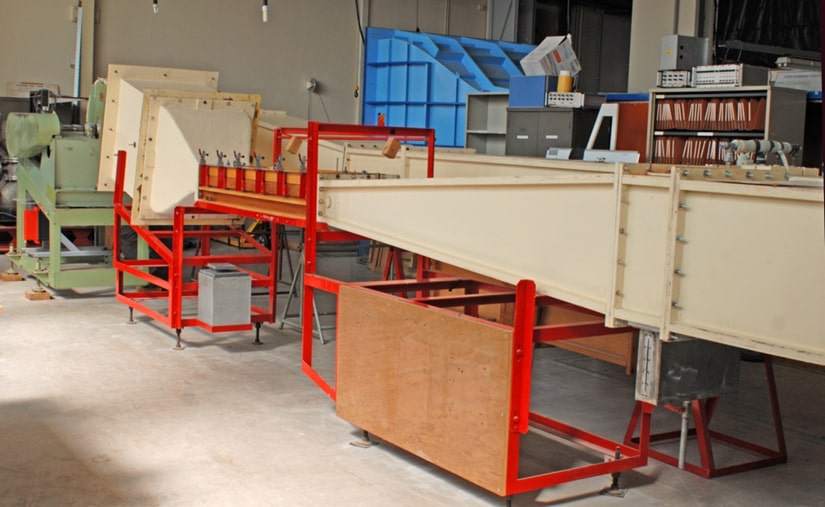
The von Karman Institute for Fluid Dynamics has converted its Cold Wind Tunnel CWT-1 into an icing wind tunnel. This facility was designed in the past to study the motion of films of anti-icing fluids applied to aircraft wings during a simulated take-off. Built out of wood and epoxy-fiberglass composite, it is internally insulated with a 5 cm layer of polystyrene foam covered by a smooth epoxy lining.
It runs in a closed-loop configuration and it has a 1.6 m long test section with a 0.1 m x 0.3 m cross section.
In order to provide optical access, both the top, side and bottom walls of the test section are made of double glazing. The large size of the windows in the test section allows several optical devices (e.g. ILIDS, PDA, 2D profile measurements, high speed imaging,…) to be installed at the same time, but since the windows are interchangeable, a non-transparent insert can be fitted to house samples and or other instruments, e.g., a force balance. The large dimensions of the window in the test section allow installing several optical devices simultaneously.
The CWT-1 is driven by a 12kW motor and it can achieve maximum flow velocities of 70 m/s within seconds. A honeycomb is located after the centrifugal fan in order to ensure flow uniformity.
The cooling of the facility is achieved by the injection of pressurized liquid nitrogen through six spray nozzles located in the return circuit. When liquid nitrogen is injected at a pressure of 5bar, temperatures as low as -40°C can be reached at full speed. Without the use of nitrogen nozzles, the flow of the wind tunnel can be by-passed through a cooler enabling temperatures ranging from -5°C at low speed to +5°C at maximum speed. The temperature and the pressure in the wind tunnel are measured by a thermocouple and a pressure probe located at the beginning of the test section. In addition, a hygrometer registers the humidity inside the wind tunnel.
The CWT-1 has several water injection points upstream the test section. The water is injected into the wind tunnel with low pressure by a plain-orifice insulated nozzle and it breaks into droplets by the effect of the air velocity inside the wind tunnel. The diameter of the nozzle orifice can be selected according to the water flow that needs to be injected. Currently, the CWT-1 is able to operate with supercooled liquid droplets and mixed phase conditions. Further modifications aim at operating under glaciated conditions using a spray bar system in the settling chamber.

Technical Characteristics
– Minimum temperature; -40°C
– Maximum speed: 70m/s
– Maximum run time: 30 minutes
– LWC: 0.001-1g/m3 – MVD: 10um-300um
– 6 component balance
– Particle Image Velocimety
– High speed imaging
– Interferometric Laser Imaging and Droplets and Ice Crystal Sizing
– Global Rainbow Thermometry
